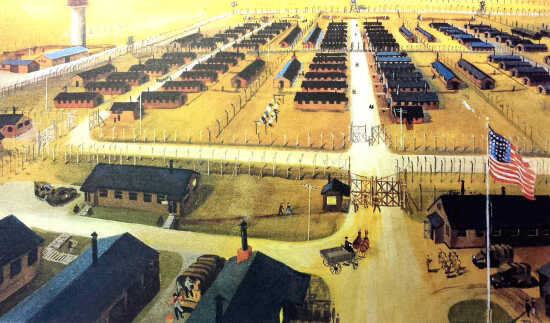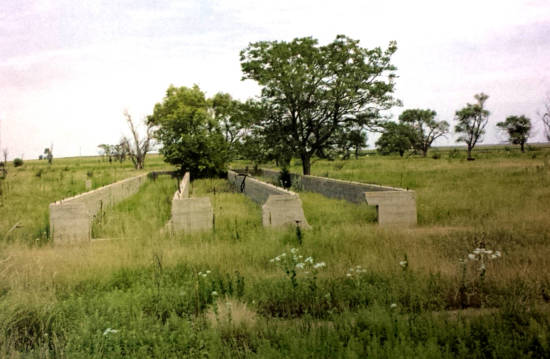Indianola POW camp nominated for National Register of Historic places

LINCOLN, Neb. — The World War II German prisoner-of-war camp north of Indianola has been nominated for inclusion in the "National Register of Historic Places."
The Nebraska State Historic Preservation Board is considering the nomination, and will discuss it at a board meeting in McCook on Friday, Sept. 20, at 1 p.m., in the third-floor training room of the Keystone Business Development Center at 402 Norris Ave. The meeting is open to the public, and property owners and anyone interested in the history of the camp and the preservation of its remains and artifacts are encouraged to attend.
In advance of the meeting, comments regarding the nomination can be sent to the preservation board at: History Nebraska, 1500 R Street, Lincoln, NE 68508-1651.

Camp Indianola has been nominated to the national registry because of its historic function during World War II, operating between 1943 and 1946 as a "branch" and "base" prisoner-of-war camp. It housed German prisoners hired out to provide labor for area farmers, and in 1944, to also house pro-Nazi non-commissioned German officers. It could hold, at any one time, up to 3,000 prisoners. Prisoners had been captured in Italy, North Africa and mainland Europe and transferred to U.S. prisoner camps by ship and rail.
Indianola's camp, as all new-build POW camps (not those placed on already existing military bases) at that time, were built to a standard Army Corps of Engineers design. The Corps preferred basically isolated areas, but only two to three miles from railroad service to facilitate deliveries of prisoners and supplies, and within a short driving distance of a town of about 5,000 to sustain the military and civilian personnel needed to operate the camp.
The Indianola camp had 189 frame and masonry buildings providing prisoner barracks, a chapel, a hospital complex and nurses' quarters, a fire station, ammunition storage building, U.S. officer and personnel administration buildings, carpentry/plumbing/sheet metal workshops, eight guard towers, warehouses, storage buildings, a canteen, a barber shop, power and heat structures, a guard house and a water tower topped with redwood water tank.

Three water wells provided water for mess halls, latrines, laundries, showers with hot and cold running water and a water/sewer treatment facility. There were three 1,000-man prisoner compounds, outdoor recreation areas, a dump site and designated roads into, out of and through the camp. Ten-foot-tall mesh-wire fences topped with razor barbed-wire enclosed 148 acres of the entire 250-acre property.
The nomination states, "The ruins of the Indianola POW camp are a collection of a water tower, two chimneys and roughly 90 building foundations that, despite the loss of materials and workmanship, continue to provide an understanding of the overall design of the camp. Through the undisturbed aspects of location, setting, association and feeling, the Indianola POW camp continues to convey its significance as a prisoner of war camp in Nebraska during World War II."
The nomination continues that the Indianola POW camp is eligible for recognition for its state and federal historical significance:
— Military criterion: For its association with World War II, housing prisoners of war captured in North Africa, Italy and mainland Europe, and providing agricultural labor to Indianola-area farmers as a branch camp of Camp Atlanta (near Holdrege).
As a base camp, the Indianola camp had a notable history for its role in the U.S. War Department's segregation efforts to curb Nazi influence within POW camps.
— Archeology criterion: For its potential to yield further information regarding the daily lives of World War II prisoners of war, and regarding the United States' adherence to Geneva Convention international rules of conduct for humanitarian treatment during war.
— On a state level, Camp Indianola is significant because it is the most intact site of the 29 POW camp that operated in Nebraska during World War II. Shortly after deactivation in 1946, the camp was used by the Bureau of Reclamation to house employees working on lake and river projects in Southwest Nebraska.
